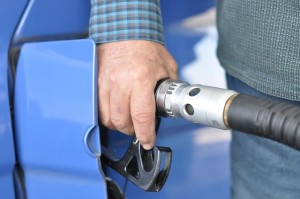 In November, 2013, EPA announced a highly contentious proposal that lowered the 2014 Renewable Fuel Standard targets below their 2013 levels. These targets apply to the amount of renewable fuels that are blended into the nation’s gasoline supply. A year later, EPA abandoned the proposal after significant push back from the renewable fuel industry, agreeing to reconsider the 2014 targets. EPA has yet to reissue the proposal.
In November, 2013, EPA announced a highly contentious proposal that lowered the 2014 Renewable Fuel Standard targets below their 2013 levels. These targets apply to the amount of renewable fuels that are blended into the nation’s gasoline supply. A year later, EPA abandoned the proposal after significant push back from the renewable fuel industry, agreeing to reconsider the 2014 targets. EPA has yet to reissue the proposal.
The American Petroleum Institute (API) and the American Fuel and Petrochemical Manufacturers (AFPM) filed a lawsuit over the delay, contending that they are left guessing how much ethanol they were required to use last year. As part of a proposed settlement, EPA announced on April 10 that they will finalize targets for 2014, 2015 and 2016 by November 30, 2015. Proponents have lauded the settlement, suggesting that regulatory certainty will help generate investment in renewables, yet some within the renewable fuel industry are stressing the need for EPA to get it right rather than just done quickly.
At issue is the precedent that will be established by the final 2014 targets. As part of the abandoned proposal for 2014, EPA claimed authority to waive some of the statutorily set volume requirements, citing lower than expected gasoline demand and a set of concerns known as the “blend wall.” Despite suggesting that they will set the 2014 requirements based on the actual volumes used, EPA has not indicated what those targets will be. Many in the renewable fuel industry are concerned that EPA will again waive some of the requirements, compromising the future of the program and billions in investment.
The question if EPA should adhere to statutorily set volume requirements is very broad. One little known fact about the 2007 EISA is that EPA is required to reset the… Read more »
EPA was right to withdraw the disastrous proposed rule for 2014. The methodology they proposed to use — assuming authority not granted to the agency in the law — did… Read more »
I must take a minor exception with the statement “EPA’s decision to make the disastrous 2014 proposal was prompted by misplaced concern for preserving the oil industry’s market share.” I… Read more »
Stock’s analysis of RIN markets (and Prof. Irwin’s, which is the basis of Stock’s) is far too theoretical. It relies on an assumption of a free and well-functioning market, which does not seem… Read more »
Yes, Stock’s paper is just theory as I said. I am aware that Bret Erickson of your esteemed organization has said that he thinks Stock’s proposed reforms would compound damage… Read more »
Instead of biofuels such as ethanol and green diesel making the internal-combustion engine fit into a world with greenhouse gas limits, wholesale new solutions are coming fast. The quote is… Read more »
Should EPA adhere to the statutorily set volume requirements? Yes. The RFS is decreasing our dependence on foreign oil, creating jobs, revitalizing rural America and improving our environment, all… Read more »
We are exporting far more gasoline than is displaced by corn ethanol, and some of the ethanol blended in our fuel is imported from Brazil to meet RFS mandates. How… Read more »
Should EPA adhere to the statutorily set volume requirements? How might EPA’s decision effect the renewable fuels industry? EPA should absolutely adhere to the statutorily set volume requirements. These requirements… Read more »
It’s intriguing that neither environmental groups nor the oil industry are fans of the current RFS. (Ref article – “EPA Abandons RFS Rulemaking for 2014”.) It also appears that,… Read more »
To answer your questions, you need to understand how RINs work and what the mandate really is. There are presently 4 RIN designations and are of a ‘nested’ nature. D6… Read more »
EPA’s rule making has become ever more out of touch with reality since the Clean Air Act of 1990, and the results are that the agency is now achieving in… Read more »